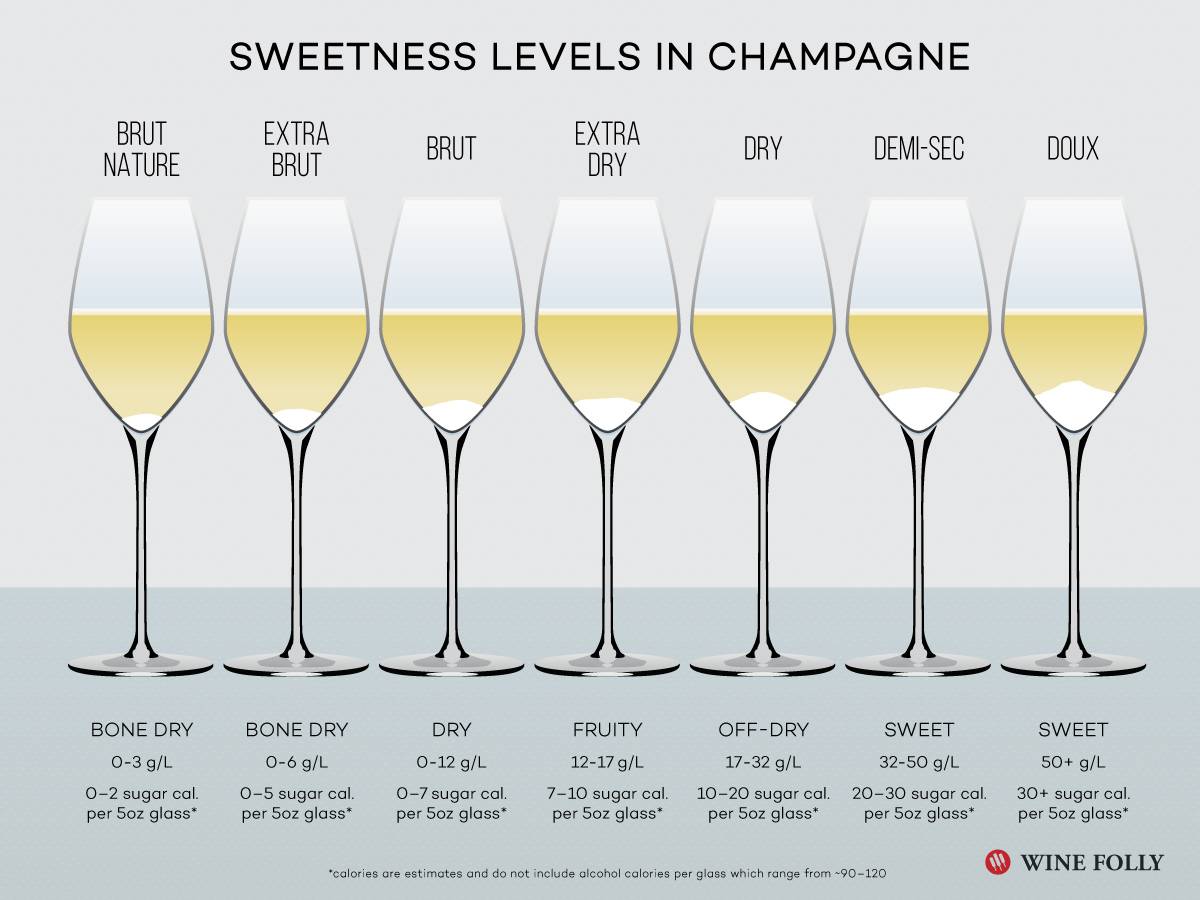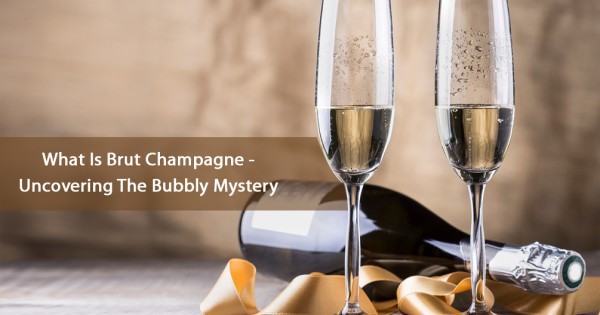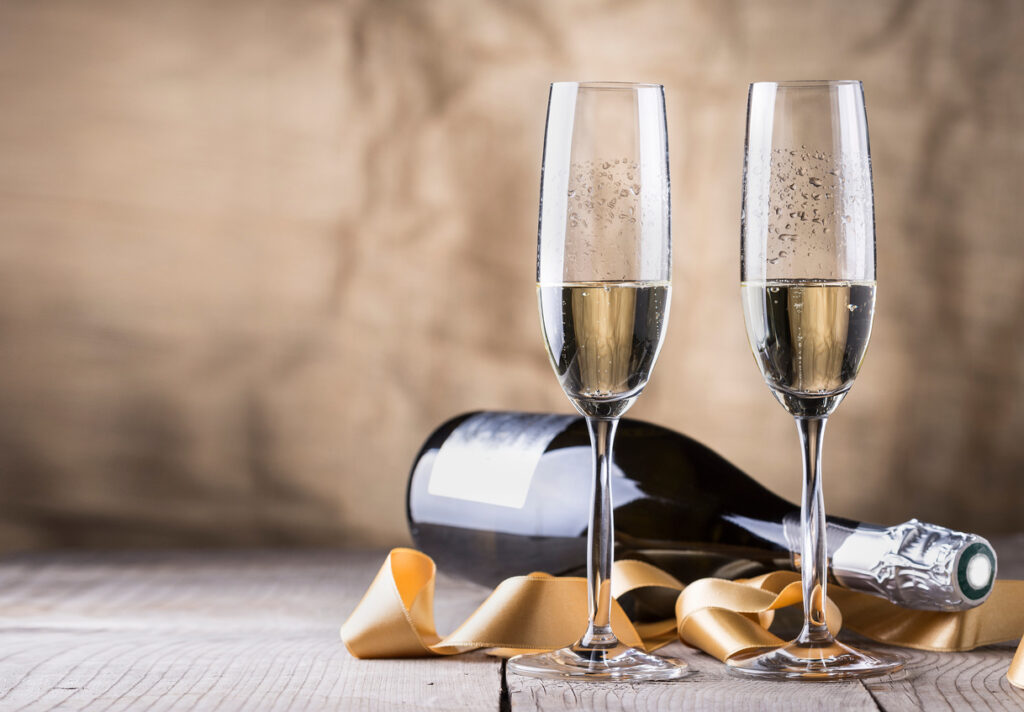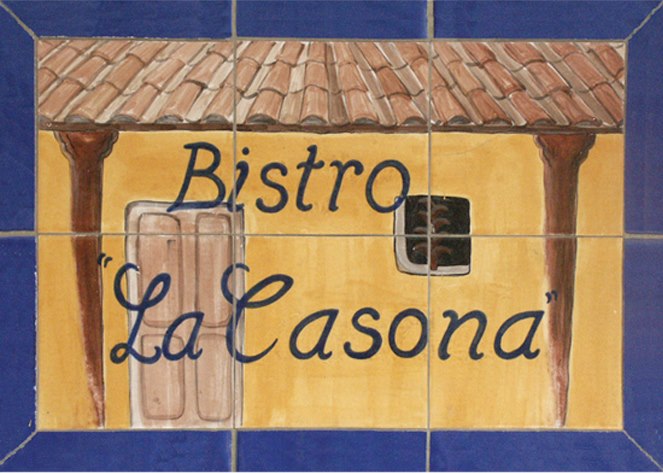Brut Vs Extra Dry Champagne: An Overview

Brut and Extra Dry Champagnes are two popular types of Champagne that differ in terms of sweetness, flavor profile, alcohol content, and serving occasions. Brut Champagne is the driest option, with less residual sugar and a crisp, refreshing taste. Extra Dry Champagne, despite its name, is actually sweeter than Brut, but still not as sweet as Demi-sec or Doux. It offers a balanced sweetness and a more rounded flavor. The alcohol content of these Champagnes may vary slightly, with Brut typically having a slightly higher alcohol content. Ultimately, the choice between Brut and Extra Dry depends on personal preference and the occasion.
What Is Brut Champagne?
Brut Champagne is a type of Champagne that is known for its dryness and crispness. It is considered to be the driest option among Champagne varieties. Brut Champagne typically contains less residual sugar compared to other types of Champagne, with a sugar content of less than 12 grams per liter. This results in a clean and refreshing taste that is perfect for those who prefer a drier palate. Brut Champagne is versatile and pairs well with a wide range of foods, making it a popular choice for celebrations and special occasions.
What Is Extra Dry Champagne?
Extra Dry Champagne is a type of Champagne that falls between Brut and Sec in terms of sweetness. Contrary to what the name suggests, Extra Dry Champagne is actually slightly sweeter than Brut Champagne. It has a sugar content ranging from 12 to 17 grams per liter, making it slightly more indulgent on the palate. Extra Dry Champagne offers a delicate balance between dryness and sweetness, appealing to those who prefer a more approachable taste. It is a versatile option that pairs well with a wide range of dishes, making it suitable for various occasions.
Differences In Taste And Sweetness

Differences in taste and sweetness are the defining factors between Brut and Extra Dry Champagne. Brut Champagne is known for its dry and crisp flavor profile, with very minimal sweetness. On the other hand, Extra Dry Champagne leans towards a slightly sweeter taste, offering a delicate balance between dryness and sweetness. It has a higher sugar content ranging from 12 to 17 grams per liter, making it more indulgent on the palate. Whether you prefer the crispness of Brut or the subtle sweetness of Extra Dry, choosing the right Champagne will enhance your dining experience.
Flavor Profile Of Brut Champagne
Brut Champagne offers a dry and crisp flavor profile, making it a popular choice among wine connoisseurs. It has minimal sweetness, allowing the natural acidity and fruitiness of the Champagne to shine through. The taste is often described as refreshing and vibrant, with notes of green apple, citrus, and toast. The dryness of Brut Champagne makes it versatile and a great accompaniment to a wide range of dishes, from seafood and poultry to creamy cheeses. Its clean and sophisticated taste profile makes it a go-to option for special occasions and celebrations.
Flavor Profile Of Extra Dry Champagne
Extra Dry Champagne offers a slightly sweeter flavor profile compared to Brut Champagne. It has a delicate balance of sweetness and acidity, with notes of ripe fruits such as pear, apple, and peach. The sweetness is subtle, providing a hint of roundness to the overall taste. However, it still retains a refreshing and crisp character, making it a versatile option for various occasions. The flavor profile of Extra Dry Champagne pairs well with a range of dishes, from light seafood and salads to creamy pastas and mild cheeses.
Alcohol Content And Food Pairing

Both Brut and Extra Dry Champagne typically have an alcohol content ranging from 11% to 12%. When it comes to food pairings, Brut Champagne’s dry and crisp nature makes it a great choice to complement seafood, oysters, and light appetizers. Its high acidity helps to cut through rich and fatty dishes, making it an ideal accompaniment to creamy pastas and mild cheeses. On the other hand, the subtle sweetness of Extra Dry Champagne pairs well with a variety of dishes, including light seafood, salads, and even fruit-based desserts.
Alcohol Content In Brut Champagne
Brut Champagne typically has an alcohol content ranging from 11% to 12%. This moderate alcohol level adds to its overall balance and crispness. The alcohol content in Brut Champagne is carefully regulated during the production process to ensure that it complements the wine’s flavor profile and enhances the drinking experience. Whether enjoying a glass of Brut Champagne as an aperitif or pairing it with seafood or light appetizers, the moderate alcohol content ensures a delightful and refreshing drinking experience.
Alcohol Content In Extra Dry Champagne
Extra Dry Champagne typically has an alcohol content ranging from 11.5% to 12.5%. This alcohol level is similar to that of Brut Champagne, contributing to its balanced and refreshing character. The alcohol content in Extra Dry Champagne is carefully regulated during the production process to ensure it complements the wine’s flavor profile. The moderate alcohol content allows for versatility in pairing with a variety of foods, including seafood, poultry, and light desserts. When serving Extra Dry Champagne, the alcohol content adds to the overall enjoyment and sophistication of the drinking experience.
Production Process And Residual Sugar

During the production process of Brut Champagne, after the primary fermentation, a mixture of yeast and sugar is added to the wine for the secondary fermentation. This process, known as the méthode champenoise, creates the bubbles in the wine. The wine is then aged on its lees for a minimum of 15 months, allowing for additional complexity and flavor development. The residual sugar in Brut Champagne is typically low, ranging from 0-12 grams per liter.
On the other hand, Extra Dry Champagne also goes through the méthode champenoise, but it has a slightly longer aging period on the lees, usually around 18-24 months. This extended aging contributes to a rounder and slightly more pronounced flavor profile. Extra Dry Champagne contains higher levels of residual sugar, ranging from 12-17 grams per liter.
The variation in residual sugar levels between Brut and Extra Dry Champagne affects the perceived sweetness of the wines. Brut Champagne is drier, while Extra Dry Champagne has a touch of sweetness. It is important to note that both styles of Champagne maintain a crisp and refreshing character, making them an ideal choice for celebratory occasions.
Production Process Of Brut Champagne
The production process of Brut Champagne begins with the primary fermentation of the base wine. After this, a mixture of yeast and sugar, known as the liqueur de tirage, is added to the wine for the secondary fermentation. This secondary fermentation takes place in the bottle, creating the bubbles in the Champagne. The wine is then aged on its lees for a minimum of 15 months, allowing for further flavor development. Finally, the Champagne is disgorged to remove the sediment and a dosage, a small amount of sugar and wine, is added to balance the flavor.
Production Process Of Extra Dry Champagne
The production process of Extra Dry Champagne is similar to that of Brut Champagne. It begins with the primary fermentation of the base wine. After this, the liqueur de tirage, a mixture of yeast and sugar, is added to the wine for the secondary fermentation. This secondary fermentation occurs in the bottle, creating the bubbles. The Champagne is then aged on its lees, allowing for further flavor development. Finally, the sediment is disgorged, and a dosage is added to balance the flavor. The main difference between Brut and Extra Dry Champagne lies in the dosage, with Extra Dry Champagne having a slightly higher dosage to achieve a touch more sweetness.
Serving Suggestions And Occasions

Serving Suggestions and Occasions:
When it comes to serving suggestions, Brut Champagne is best enjoyed as an aperitif or paired with light seafood dishes, oysters, and light appetizers. Its crisp acidity and dry finish make it a refreshing choice for summer gatherings and elegant dinners.
On the other hand, Extra Dry Champagne’s subtle sweetness lends itself well to slightly richer dishes. It pairs beautifully with foie gras, roasted poultry, or creamy desserts. The touch of sweetness in Extra Dry Champagne adds a roundness to the overall flavor profile.
Both Brut and Extra Dry Champagne are versatile options for celebrations and special occasions. Whether you’re toasting a milestone or simply enjoying a Saturday brunch, these sparkling wines are sure to elevate any moment into a memorable experience.
So, whether you prefer the dryness of Brut or the gentle sweetness of Extra Dry, there is a Champagne style for every palate and occasion. Cheers to the sparkling wines that bring joy and sparkle to our lives!
Best Occasions For Serving Brut Champagne
Best occasions for serving Brut Champagne are generally those that call for a refreshing and crisp drink. Its dryness and acidity make it a perfect choice for various occasions. Some of the best occasions for serving Brut Champagne include:
- Aperitifs: Brut Champagne is an excellent choice for pre-dinner drinks, as its vibrant and invigorating qualities awaken the palate and set the tone for a meal.
- Celebrations: Whether it’s a birthday, anniversary, or any other special occasion, toasting with a glass of Brut Champagne adds an extra touch of elegance and festivity to the celebration.
- Summer gatherings: The light and refreshing nature of Brut Champagne makes it an ideal companion for outdoor summer parties and picnics. Its bubbles and crispness are perfectly suited for warm weather enjoyment.
- Formal dinners: Brut Champagne’s dryness and acidity make it a versatile option that can be paired with a range of dishes, making it an excellent choice for formal dinners and multi-course meals.
Remember, Brut Champagne is a versatile and sophisticated choice for any occasion that calls for a sparkling wine that delights the senses and adds a touch of luxury to the moment.
Best Occasions For Serving Extra Dry Champagne
Extra Dry Champagne is a versatile option that suits a variety of occasions. Its subtle sweetness and approachable taste make it an excellent choice for different events. Here are some of the best occasions for serving Extra Dry Champagne:
- Brunches: Extra Dry Champagne pairs beautifully with brunch dishes like eggs benedict, quiches, and lighter pastries, adding a touch of elegance to the meal.
- Casual gatherings: Whether it’s a backyard barbecue, a picnic, or a relaxed get-together with friends, Extra Dry Champagne offers a crowd-pleasing option that can be enjoyed by everyone.
- Dessert pairing: The slight sweetness of Extra Dry Champagne complements creamy desserts, fresh fruit, and even sweeter treats like macarons and mousse.
- Wedding receptions: Extra Dry Champagne provides a balance between the dryness of Brut and the sweetness of other Champagne styles, making it a popular choice for toasting and celebrating weddings.
Remember, the versatility of Extra Dry Champagne makes it suitable for a wide range of occasions, where it can enhance the overall experience with its delightful flavors and celebratory nature.
Conclusion

In conclusion, understanding the difference between Brut and Extra Dry Champagne allows wine enthusiasts to make informed choices based on their taste preferences and the occasion. While Brut Champagne is known for its dryness and crispness, Extra Dry Champagne offers a touch of sweetness and roundness. Exploring different producers and cuvées can help discover the nuances and individual styles that suit one’s palate. Whether it’s a formal celebration or a casual gathering, choosing between Brut and Extra Dry Champagne can enhance the overall experience and add a touch of elegance to any occasion.
Comparison Of Brut And Extra Dry Champagne
When comparing Brut and Extra Dry Champagne, it becomes clear that they represent two different levels of sweetness. Brut Champagne, with its low sugar content, offers a dry and crisp flavor profile. On the other hand, Extra Dry Champagne has a touch more sweetness, providing a rounder and slightly sweeter taste. This difference in sweetness levels makes Brut Champagne ideal for those who prefer a drier experience, while Extra Dry Champagne caters to those who enjoy a hint of sweetness. Both styles have their merits and are suited for different occasions and preferences.
Experts’ Recommendations And Final Thoughts
Experts recommend considering personal taste preferences when choosing between Brut and Extra Dry Champagne. Those who prefer a drier and crisp taste with minimal sweetness should opt for Brut. It is perfect for celebrations and pairs well with seafood and light appetizers. On the other hand, Extra Dry Champagne appeals to those who enjoy a slightly sweeter profile. It pairs well with desserts and can be a delightful choice for toasting. Ultimately, the choice between Brut and Extra Dry Champagne comes down to individual preference and the desired level of sweetness in the sparkling wine. Cheers to finding your perfect Champagne!
FAQ About Brut Vs Extra Dry: Understanding Champagne Levels
Q: What is the main difference between Brut and Extra Dry champagne?
A: The main difference lies in their sweetness levels. Brut is drier than Extra Dry champagne.
Q: How is the sweetness level of champagne determined?
A: Champagne sweetness is measured by the amount of residual sugar in the wine after fermentation.
Q: Which one is sweeter – Brut or Extra Dry?
A: Contrary to what the name suggests, Extra Dry champagne is actually sweeter than Brut champagne.
Q: Which champagne is generally preferred for toasting at celebrations?
A: Brut champagne is the most popular choice for toasting at celebrations due to its crisp and dry flavor profile.
Q: Can the sweetness of champagne affect food pairings?
A: Yes, the sweetness level of champagne can significantly impact its compatibility with various types of foods.
Q: How do Brut and Extra Dry champagnes pair with different types of dishes?
A: Brut champagne pairs well with seafood, appetizers, and light dishes, while Extra Dry champagne complements desserts and dishes with a hint of sweetness.
Q: Are there any other sweetness levels of champagne apart from Brut and Extra Dry?
A: Yes, other common sweetness levels of champagne include Extra Brut, Sec, Demi-Sec, and Doux.

Bistro La Casona is a charming and vibrant culinary destination located at Calle Arenales 222, nestled between Murillo and Aroma in the heart of Casco Viejo/Centro Histórico, Santa Cruz de la Sierra, Bolivia. Our story is one of passion, creativity, and a deep love for exceptional dining experiences. Bistro La Casona has carved out a niche for itself as a beacon of culinary excellence in the heart of the historical center of Santa Cruz de la Sierra. Our journey began with a simple idea – to create a space where food, ambiance, and hospitality come together to offer an unforgettable experience.